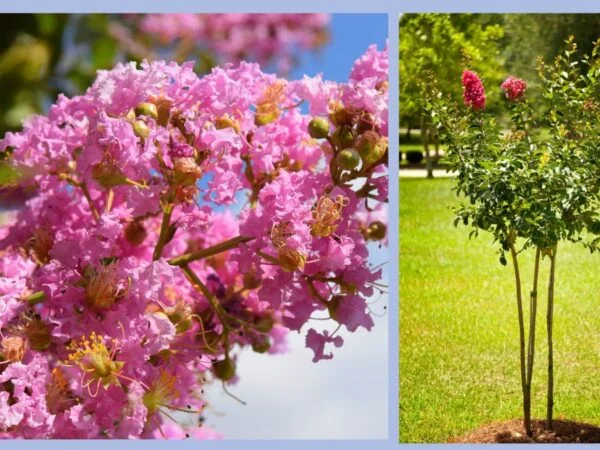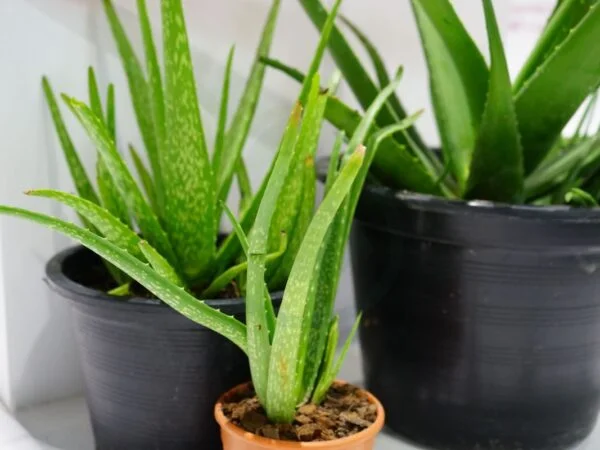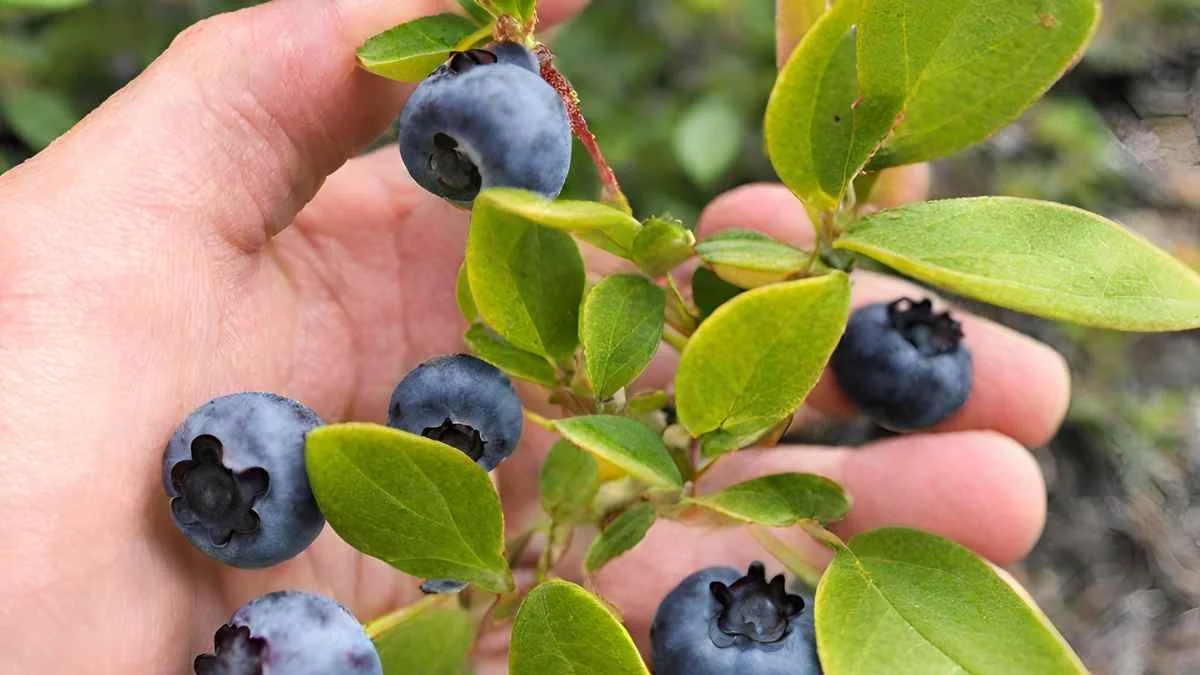
Curious about why your blueberry plant's leaves are changing color, showing leaf discoloration and chlorosis spots? If you've noticed a yellow hue and leaf discoloration taking over your once vibrant green foliage, you're not alone. Understanding the reasons behind this transformation is crucial to help your blueberry plant thrive. In this post, we delve into the common causes of yellowing leaves (chlorosis) in blueberry plants and provide practical tips to address this issue effectively.
Stay tuned to uncover the secrets to keeping your blueberry plant healthy and happy, ensuring a bountiful harvest of those delicious berries.
Key Takeaways
- Check Soil Health: Yellowing leaves could be due to soil issues, so test and improve soil quality.
- Identify Nutrient Deficiencies: Diagnose specific nutrient deficiencies causing yellow leaf discoloration for targeted solutions.
- Adjust Soil pH: Address imbalanced soil pH levels by adjusting them to support plant health.
- Modify Watering Routine: Ensure proper watering practices to prevent yellowing of blueberry plant leaves.
- Implement Feeding Schedule: Establish a feeding schedule to provide necessary nutrients for healthy plant growth.
- Utilize Mulching: Benefit from mulching to retain moisture, regulate soil temperature, and prevent nutrient loss.
Yellowing Causes
Nutrient Deficiencies
Identify iron, magnesium, and nitrogen deficiencies causing yellow leaves. Understand how yellow leaves signal a lack of essential nutrients. Learn how nutrient deficiencies affect different parts of blueberry plants.
Soil pH Imbalance
Explore the impact of soil pH on nutrient availability for blueberry plants. Understand the ideal pH range and its importance for plant growth. Discover how soil pH imbalance can lead to yellowing leaves.
Iron Deficiency
Recognize iron deficiency symptoms in blueberry plants. Learn how iron deficiency affects the youngest leaves differently. Understand the importance of addressing iron deficiency promptly.
Watering Issues
Identify how watering practices can lead to yellow leaves. Learn the significance of proper watering adjustments for plant health. Understand the role of consistent watering in preventing nutrient deficiencies.
Diagnosing Yellow Leaves
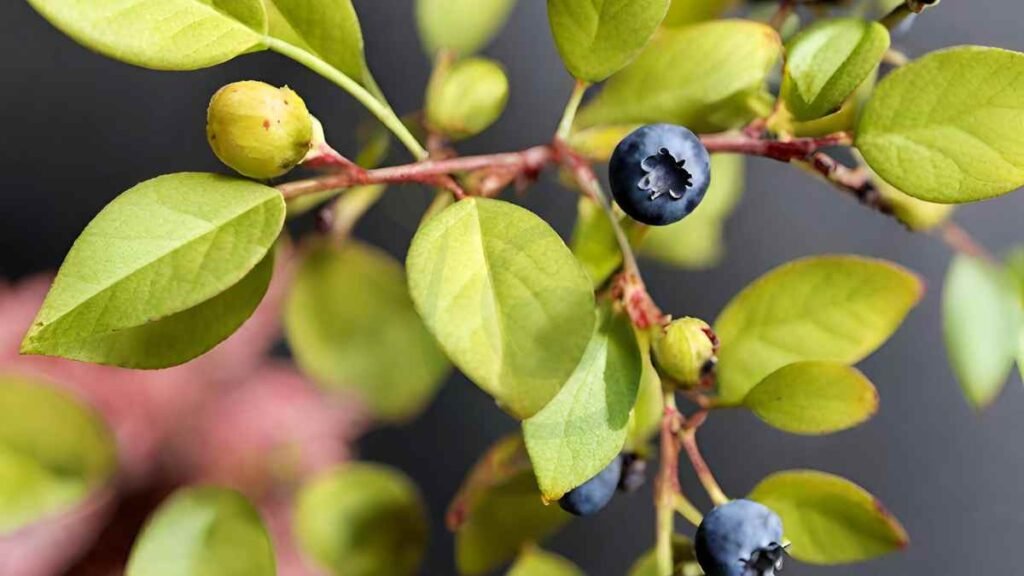
Soil Testing
l testing is crucial in diagnosing issues with blueberry plants. It helps identify pH levels and nutrient deficiencies accurately. By conducting soil tests, gardeners can ensure that their blueberry plants receive the necessary nutrients for optimal growth.
- Importance of soil testing: Essential to understand the soil's composition and its impact on plant health.
- Identifying pH levels: Helps in adjusting the soil acidity to meet blueberries' specific needs.
- Nutrient deficiencies: Pinpoints lacking nutrients like nitrogen, iron, or magnesium affecting plant health.
Visual Inspection
Visual inspection plays a vital role in detecting pests, diseases, and stress factors affecting blueberry plants. Gardeners should regularly inspect their plants for any signs of trouble to address issues promptly.
- Significance of visual inspection: Allows early detection of problems before they escalate.
- Common visual cues: Yellowing leaves, spots, wilting, or abnormal growth patterns indicate underlying issues.
- Identifying plant problems: Enables gardeners to take necessary actions such as pest control or disease management.
Importance of Soil Health
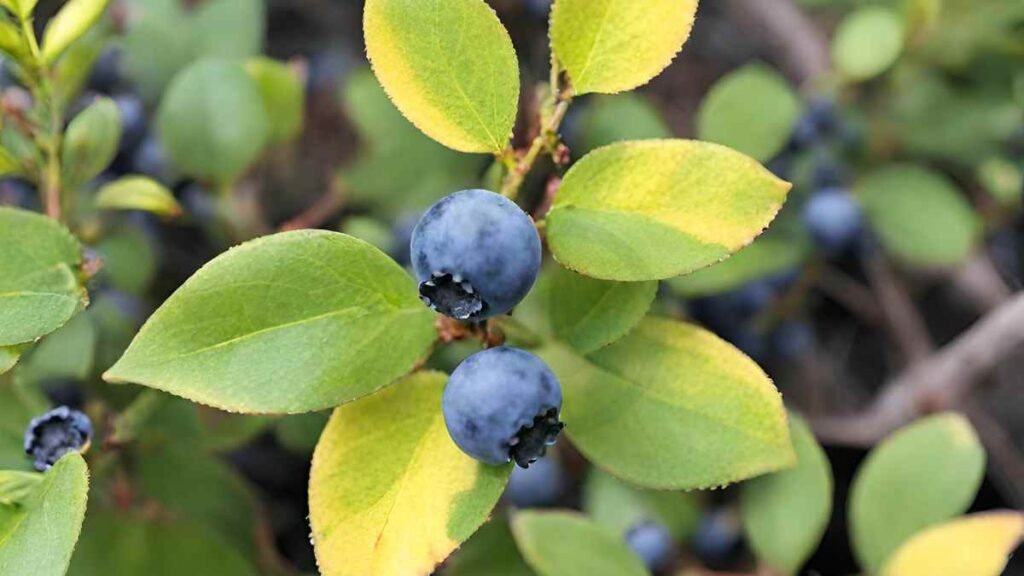
Testing Significance
Testing soil and plants is crucial to understand the reasons behind blueberry plant leaves turning yellow. By conducting tests, you can reveal nutrient deficiencies and pH imbalances that may be causing the issue. Timely testing is essential for maintaining overall plant health.
When soil lacks essential nutrients or has an incorrect pH level, blueberry plants struggle to absorb the necessary nutrients. This leads to yellowing leaves as a visible sign of distress. Therefore, regular testing is vital to identify these issues promptly.
Regular testing not only helps in diagnosing current problems but also plays a preventive role. By detecting nutrient deficiencies early on through testing, you can take corrective measures before the plant's health deteriorates further. This proactive approach ensures optimal growth and productivity for your blueberry plants.
pH Balance Effects
The pH balance of the soil directly impacts how effectively blueberry plants can uptake nutrients. An improper pH level can hinder the absorption of essential minerals like iron and manganese, leading to yellow leaves. Maintaining the correct pH balance is crucial for ensuring proper nutrient uptake.
When blueberry plants experience a pH imbalance, their growth and development are adversely affected. This imbalance disrupts the plant's ability to access vital nutrients, resulting in stunted growth and decreased fruit production. To prevent yellow leaves and promote healthy plant growth, it is essential to monitor and adjust the soil's pH levels accordingly.
Nutrient Deficiency Impact
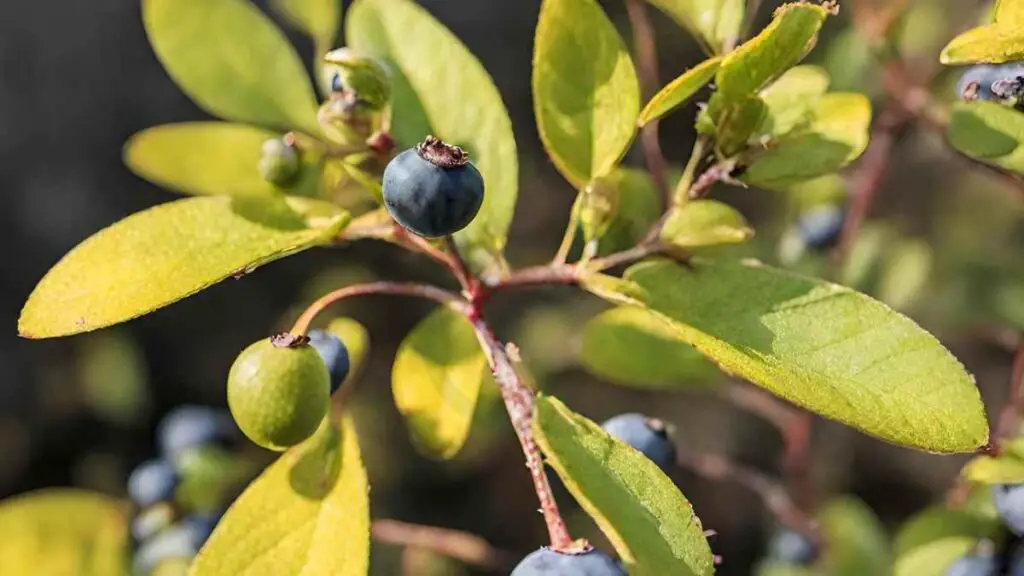
Identifying Lack
Spotting nutrient deficiencies in blueberry plants is crucial for maintaining their health. Yellowing leaves can indicate various issues, such as nitrogen, iron, or magnesium deficiency. Examining the leaves' color and pattern helps pinpoint the lacking nutrient.
Differentiating between nutrient deficiencies involves observing specific symptoms on the plant. Nitrogen deficiency often shows up as overall yellowing, while iron deficiency leads to yellowing between leaf veins. Promptly addressing these deficiencies is essential to prevent further damage to the plant.
Addressing nutrient deficiencies promptly is vital for blueberry plants' overall well-being. Neglecting these issues can lead to stunted growth, poor fruit production, and even plant death. Regular monitoring and swift action are key to maintaining healthy blueberry plants.
Treatment Options
Exploring treatment options for correcting nutrient deficiencies in blueberry plants is crucial for their recovery. Utilizing soil amendments like compost or manure can help replenish depleted nutrients in the soil. Applying balanced fertilizers tailored to the plant's needs can aid in restoring its health.
Proper treatment plays a significant role in preventing yellow leaves in blueberry plants. Ensuring that the plant receives adequate nutrients through fertilization and soil amendments promotes lush green foliage. Timely intervention with suitable treatments can reverse yellowing and promote overall plant vigor.
Soil pH Adjustment
Testing Methods
l pH testing methods vary, including using pH meters, test strips, or soil sampling. Accurate testing is crucial to determine nutrient deficiencies affecting plant health. These methods help in diagnosing issues like yellow leaves accurately.
Understanding the significance of proper testing methods is vital for maintaining optimal plant growth. By ensuring accurate results, gardeners can address nutrient imbalances promptly. Yellow leaves can be a symptom of various issues that accurate testing can pinpoint effectively.
Amendment Solutions
Exploring solutions such as sulfur or lime for adjusting soil pH is essential in correcting nutrient deficiencies. Amendments play a crucial role in balancing soil nutrients and acidity levels. Organic compost offers a sustainable solution by enriching the soil with essential nutrients.
Sulfur amendments are effective in lowering soil pH levels, benefiting plants that thrive in acidic conditions. Lime applications, on the other hand, raise pH levels for plants requiring alkaline environments. Understanding these solutions helps in addressing specific plant needs for optimal growth.
- Pros of Amendment Solutions:
- Corrects imbalances efficiently
- Offers sustainable solutions for plant health
- Cons of Amendment Solutions:
- Requires periodic application
- Overuse can lead to pH extremes impacting plant growth
Watering Adjustments
Proper Techniques
Proper techniques for adjusting soil pH and nutrient levels are crucial for maintaining healthy blueberry plants. Understanding the correct methods ensures optimal plant care, leading to vibrant foliage and abundant fruit production. Effective adjustment methods involve testing the soil regularly to monitor pH levels accurately.
Discovering effective methods for maintaining healthy blueberry plants involves regular monitoring of soil conditions. By adjusting watering practices based on soil pH readings, you can provide the necessary nutrients for robust plant growth. Implementing these proper techniques results in lush green leaves and bountiful harvests.
Seasonal Changes
Seasonal changes play a significant role in impacting blueberry plants and their nutrient uptake. As seasons shift, plants' needs change, requiring adjustments in care routines. Adapting plant care practices to seasonal variations ensures that blueberry plants receive adequate nutrients throughout the year.
Exploring how seasonal changes affect blueberry plants reveals the importance of adapting care practices accordingly. With shifting weather patterns, plants' growth patterns fluctuate, necessitating modifications in watering schedules and fertilizer applications. Understanding these seasonal impacts is essential for maintaining healthy and productive blueberry plants.
Feeding Schedule
Nutrient Timing
Proper nutrient timing is crucial for blueberry plants to thrive and avoid yellow leaves. Applying nutrients at the right time ensures optimal absorption and utilization by the plants. By providing nutrients when they are most needed, you can prevent deficiencies that lead to yellowing leaves.
Understanding the significance of nutrient timing helps in maintaining healthy blueberry plants. Timing nutrient applications based on the plant's growth stages and seasonal needs is essential. This practice not only prevents yellow leaves but also promotes overall plant health and productivity.
Plant Needs
Blueberry plants have specific nutritional requirements for growth and development. Meeting these needs is vital to prevent nutrient deficiencies that result in yellow leaves. Essential nutrients such as nitrogen, phosphorus, potassium, and micronutrients play a significant role in maintaining vibrant foliage.
To maintain healthy blueberry plants, it is important to provide adequate sunlight, water, and well-draining soil. Ensuring proper pH levels in the soil is also crucial for nutrient uptake. By meeting these basic requirements, you can prevent issues like yellowing leaves and promote robust plant growth.
Mulching Benefits
Soil Moisture
Proper soil moisture is crucial for blueberry plant health as it aids in nutrient absorption. Consistent watering prevents yellow leaves by maintaining optimal moisture levels. Soil moisture also prevents nutrient deficiencies, ensuring the plant's overall well-being.
Controlling temperatures is vital for blueberry plants, impacting their growth significantly. Maintaining soil temperature at an optimal level is essential for plant health and productivity. Extreme temperatures can adversely affect plant growth, emphasizing the need for temperature regulation to ensure thriving blueberry plants.
Preventive Measures
Regular Monitoring
Blueberry plants require regular monitoring to detect issues early and prevent yellow leaves. By consistently checking the plants, you can catch problems before they escalate. Monitoring is key to maintaining healthy blueberry plants.
Seasonal changes greatly impact blueberry plants, making them sensitive to weather variations. Understanding how seasons affect plant health is crucial for proper care. Adapting your practices based on seasonal sensibility ensures optimal growth.
Closing Thoughts
As you've learned about the various causes of yellowing in blueberry plant leaves, diagnosing issues, and the critical role of soil health and nutrients, it's clear that a proactive approach is key to maintaining vibrant plants. By adjusting watering, feeding schedules, and mulching wisely, you can prevent nutrient deficiencies and ensure your blueberries thrive. Remember, healthy soil pH levels are fundamental for optimal growth. Implement these preventive measures to keep your blueberry plants green and fruitful.
Take charge of your blueberry plants' health today by applying these insights. Monitor your plants regularly, make necessary adjustments, and enjoy a bountiful harvest. Your dedication to proper care will not only yield beautiful foliage but also delicious berries for you to savor. Stay attentive to your plants' needs, and they will reward you abundantly.
Frequently Asked Questions
Why are my blueberry plant leaves turning yellow?
When blueberry plant leaves turn yellow, it can be due to various reasons such as nutrient deficiencies, soil pH imbalance, or watering issues. It is essential to identify the specific cause to address the problem effectively.
How can I diagnose the reason behind my blueberry plant's yellow leaves?
To diagnose yellowing leaves on your blueberry plant, carefully observe the overall condition of the plant, check for signs of pests or diseases, assess soil moisture levels, and consider factors like sunlight exposure and drainage. Conduct a thorough examination to pinpoint the exact cause.
Why is soil health important for blueberry plants?
Maintaining good soil health is crucial for blueberry plants as it directly impacts their growth, nutrient uptake, and overall well-being. Healthy soil provides essential nutrients, proper drainage, and a balanced pH level necessary for optimal blueberry plant development.
What impact does nutrient deficiency have on blueberry plants?
Nutrient deficiency in blueberry plants can lead to stunted growth, reduced fruit production, and increased susceptibility to diseases. Providing the correct balance of nutrients through proper fertilization is vital to ensure healthy foliage and abundant harvests.
How can adjusting soil pH help with yellowing blueberry plant leaves?
Blueberries thrive in acidic soils with a pH level between 4.5 and 5.5. Adjusting the soil pH within this range can enhance nutrient availability to the plants, promote healthy root development, and prevent issues like yellowing leaves caused by pH imbalances.
Image Source: Paid image from CANVA

